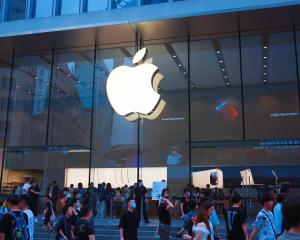New versions of Internet Explorer, Firefox and Chrome offer faster page loading, streamlined designs and additional features, including ways to block web advertisers from tracking your online movements.
The updates are welcome, particularly those from Microsoft and Mozilla, whose previous browsers were getting a bit long in the tooth, at least in web years. The previous major versions of Internet Explorer and Firefox were released two and nearly three years ago, respectively.
I've long been a Firefox user. Despite the dearth of updates, I've appreciated its speed, features and ability to be customised through add-ons. To me, Internet Explorer has always felt sluggish and Chrome just too stripped-down.
After trying out all three of the new versions, I'm sticking with Firefox. I like its new features the best, and the changes made by its rivals weren't enough to convince me to switch.
Some consumers won't be able to compare all three browsers for themselves. Internet Explorer 9 is available only for computers running Windows Vista or Windows 7. So if you're running Microsoft's Windows XP or use a Mac or Linux computer, you're out of luck.
I found things to like about all the new browsers. All three are very fast at loading web pages. A lot of changes have been made under the hood to speed things up, including remaking the "engines" that run JavaScript, which is one of the key technologies around which Web pages are built these days.
The speed is particularly noticeable with Internet Explorer. By some independent assessments, it's now the fastest browser available. Internet Explorer 8 seemed to take forever to start up and to load pages, so the change is a major improvement.
Another thing to like about all the new browsers is their embrace of HTML 5, a collection of new standards for coding and designing dynamic web pages. Google has long included strong support for HTML 5 in Chrome, but Mozilla has nearly caught up with Firefox 4. While Internet Explorer still lags behind, its adoption of the various pieces of HTML 5 has increased significantly since its last version.
That's important because it helps to ensure that consumers will experience web pages the same way no matter what browser or device they use. HTML 5 also allows browsers to do things like play videos or even games without the need for plug-in programs such as Adobe's Flash, which can bog down computer systems and pose security threats.
Web surfers also will notice that all three of the major browsers now emphasise tabs and the web pages themselves, rather than buttons or menu options. You can turn on the menu, bookmark and other toolbars in Internet Explorer and Firefox, but by default they are turned off.
That leaves more room for web pages but makes it more difficult for users to control the applications or find things like bookmarked pages.
Each browser maker has also added its own version of an anti-tracking feature. Those features are intended to allow users to either bar advertisers from following their online movements or at least ask advertisers to refrain from doing so. Unfortunately, there's not yet a standard for how web surfers can opt out of being tracked and targeted for advertising.
While there are advantages and disadvantages to each browser's approach, all of their anti-tracking features suffer from the same two shortcomings: they are turned off by default and there's no simple "button" for turning them on; instead, users have to navigate through several layers of obscure settings menus to find them.
Even though I knew the options were included in the browsers, I had to turn to web help pages and notes from my conversations with representatives of the browser makers to find them.
Given the large and growing concern about privacy on the web, the browser makers ought to make this process a lot easier.
The browsers have other new features as well. Internet Explorer now allows users to "pin" web pages to their Windows task bar, allowing them to open those pages and Web applications as they would Windows programs. Chrome has added passwords to its long-standing feature that synchs settings across different computers.
What most impressed me, though, was the collection of new features from Firefox, the best of which is called "App Tabs." These are tabs that open each time you launch the browser and are visible no matter how many tabs you have open, helping you get to sites you visit frequently. The tabs change colors when their web pages have changed, which can inform you when you've gotten a new message in Gmail, say, or new tweets on Twitter.
So I'm staying with Firefox. But there are good reasons to consider all three new browsers. They're all markedly better than what you're using now.

-Rating: 8.0 (Out of 10)
-Likes: New features such as "App Tabs" and "Panorama" make it easier to find and group tabbed pages; sync feature allows users to access recently viewed pages, passwords and bookmarks across devices; improved speed and support for HTML 5
-Dislikes: Anti-tracking feature difficult to find and turn on; stripped-down interface can make it difficult to change settings
-Web: www.firefox.com
GOOGLE CHROME 10.0 WEB BROWSER

-Rating: 7.5 (Out of 10)
-Likes: Very fast start-up and page loading; sync feature now supports passwords
-Dislikes: Anti-tracking technology is an optional add-on and is difficult to implement; Spartan interface makes it difficult to change settings or even access bookmarks
-Web: www.google.com/chrome

-Rating: 7.0 (Out of 10)
-Likes: Speed boost from previous version; allows users to pin Web pages to Windows taskbar so they can be launched like programs; "accelerators" let users look up words or tweet links without first having to open up a new browser window.
-Dislikes: Only available for computers running Windows Vista or Windows 7; anti-tracking technology difficult to access and turn on; support for HTML 5 isn't as extensive as that of other browsers












